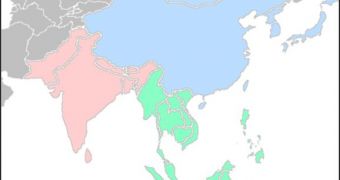An international group of scientists has recently shed some light on one of the most controversial issues related to human evolution, namely how the Asian continent was first populated. Using a wide array of genomes from across the continent, the team was able to map them out completely, and to determine that they all had the same common ancestry. This can only mean one thing – the entire continent was covered in one continuous wave, the scientists say. The announcement was made by the Human Genome Organization (HUGO) Pan-Asian SNP Consortium, Nature News reports.
The group is focused on discovering differences between individuals by looking at similarities and unique traits inside the individual bases that make up each person's own genetic code. The main targets of their work were single-nucleotide polymorphisms (SNP), which are believed to change according to ancestry, the environment, and a host of other factors. The new findings directly contradict the previous knowledge on the history of the Asian continent, which held that it had been populated through at least two migratory waves. Evidence of this was not revealed by the SNP analysis.
“In Asia, we are all related. It brings us closer together,” Genome Institute of Singapore scientist Edison Liu, who has also been the lead author of the new work, says. According to leading anthropologists, Asia was populated some 60,000–75,000 years ago, when a group of endeavoring hominids left Africa, and traveled along the Indian coast. They then started spreading out through Southeast Asia, and then further South, into modern-day Oceania. But, at first glance, the new study does not account for the large differences in appearance between the various people living on the continent.
The science group explains that this may be because its northern parts – which now include Japan, Mongolia and China, might have been populated later on, by already-evolved groups of people leaving the South. In their experiments, the scientists analyzed more than 1,928 individuals, and looked at some 55,000 SNP variations. It took more than five years for this cumbersome process to be completed, Liu says. “It's an impressive collection of samples, a huge amount of work and analyses, and it will contribute greatly to the field,” evolutionary geneticist Mark Stoneking, who is based at the Max Planck Institute for Evolutionary Anthropology, in Leipzig, Germany, says of the study. He has not been a part of the new research.

 14 DAY TRIAL //
14 DAY TRIAL //